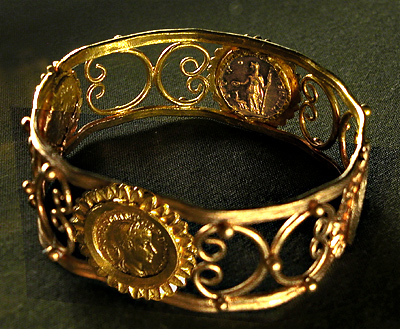
Phonecian ship.

Palura, mentioned by the Greek geographer Ptolemy in the second century CE and in a South Indian inscription of the third century, was an internationally important emporium further to the Southwest, most likely at the Rishikulya estuary or nearby, on the Southern elongation of Chilika Lake, whereas village known as Palur still exists today. According to Ptolemy, there was a place near Palur, called Apheterion, the “point of departure” for ships bound to Chryse, the “Golden Land”, the “ Suvarnabhumi” of South East Asia. It is quite likely that the prominent hillock South of the present village Palur, which in fact, is the highest peak on the coast up to the mouth of the Ganges, and which was known to the Portuguese of the sixteenth century as Serra de Palura served as a landmark for early seafarers in the Bay of Bengal.
About Chelitalo in U-cha (Central Orissa) Xuan Xang writes, “Here it is merchants depart for distant countries, and strangers come and go and stop here on their way. The walls of the city are strong and lofty. Here are found all sorts of rare and precious articles.”
During these early centuries CE, Kalinga’s importance for trans-Asian maritime trade seems to have been strengthened by the fact that in the early centuries CE even large vessels usually did not yet cross the Bay of Bengal directly from Sri Lanka to Southeast Asia. Instead, they proceeded up to Palura and Chelitalo from which points they crossed the ocean for Survarnabhumi...AAn inscription from East Java even mentioned Kalinganagara, indicating perhaps a “colony” of traders from Kalinga. Similarly, Southeast Asian traders and the fame of their merchandise had an impact on Orissa as well. A portrayal of an Indonesian dagger (kris) on the Parasuramesvara temple in Bhubaneswar (7th Century AD) is a testimony to such relations between Orissa and Indonesia.
http://kalingacalling.blogspot.in/2011/05/maritime-trade-of-ancient-kalinga-and.html
This is a continuation of the blogpost on bronze pine cone and a pair of bronze peacocks now in the Vatican but which originally belonged to a Temple of Isis in Pompeii. http://bharatkalyan97.blogspot.com/2015/06/two-bronze-peacocks-11-ft-high-bronze.html
Isis was the protective divinity venerated by seafaring merchants of the Bronze Age.
An ancient Isis festivity:
"Isis Pharia (Isis of the Lighthouse) was a patron of navigators and the inventor of the sail. Of her two major festivals, or ploiaphesia, the one on March 5 (Ash Wednesday) marked the beginning of the sailing season with the symbolic launch of the Navigium Isidis, the Ship of Isis. It was one of the last great pagan festivals to be celebrated in the Roman Empire, surviving well into the early Christian era.
https://www.cointalk.com/threads/ancients-late-roman-pick-up-4-festival-of-isis.249276/)
Isis and Sarapis in a galley, going right. Isis is standing on th prow, holding a sail and looking back; Sarapis is seated on the stern, holding the second sail.


Decorated Bull in an Egyptian procession in honour of Isis -- Painting by Frederick Arthur Bridgeman
[quote] Isis, patron of Women, Mothers, Children, Magick, Medicine and the Ritual of Life she was revered in all of Egypt, and later in Greece, Rome and even in India. For many Romans, Egyptian Isis was an aspect of Phrygian Cybele, whose orgiastic rites were long naturalized at Rome, indeed she was known as Isis of Ten Thousand Names...
“Everywhere in the Book of the Dead, the deceased is identified with Osiris from 3400 BC to the Roman period,” E A Wallis Budge wrote. After the New Kingdom (from 1570 BC) initiates into the religion believed that they would enjoy identification or communion with the god at death, thus triumphing with him over death. For those who have attained knowledge (gnosis), the blessed end is deification. Thus everlasting life could be had by initiation or by receiving knowledge by accepting a discourse (logos).

For the Egyptians, Serapis or Osiris was the Lord of life and death and so the mystery cult was an important part of his worship. By identifying himself with Osiris, the initiate became immortal. [unquote] http://carnaval.com/isis/
 Inside of bracelet showing reverse of Julia Domna coin depicting Juno Regina with a peacock.
Inside of bracelet showing reverse of Julia Domna coin depicting Juno Regina with a peacock.Vienna, Kunsthistorisches Museum. Credits: Barbara McManus, 2006
Isiopolis, a scene from a votive frieze showing herons, seated Isis, standing Bull, aquatic birds.
See:
Ancient cults as patrons of seafaring and seafarers in Istria (Vesna Girardijurkic, 2012) Histria Antiqua, 21/2012
https://www.scribd.com/doc/267743053/Ancient-cults-as-patrons-of-seafaring-and-seafarers-in-Istria-Vesna-Girardijurkic-2012-Histria-Antiqua-21-2012
https://www.scribd.com/doc/267743053/Ancient-cults-as-patrons-of-seafaring-and-seafarers-in-Istria-Vesna-Girardijurkic-2012-Histria-Antiqua-21-2012



